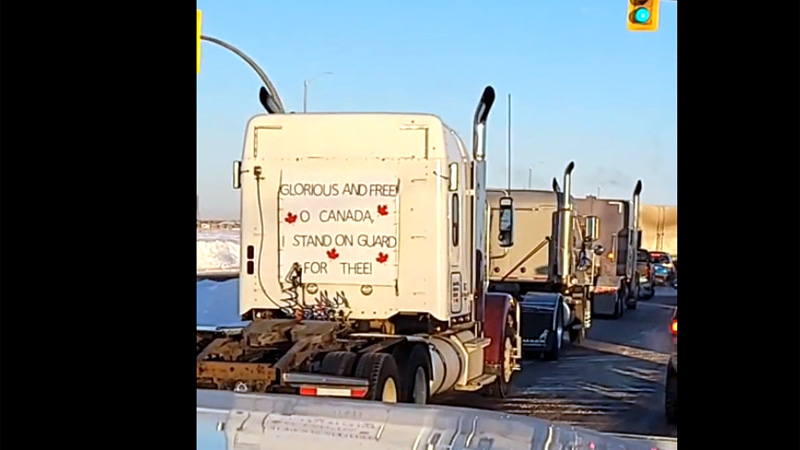The drive from Vancouver to the Ontario border is 2,500-kilometers long. After that, there’s a further 2,000 kilometers to go before one reaches Ottawa. (For a total of 2,800 miles.)
As the Freedom Convoy traversed our vast country in late January 2022, it dealt with an array of issues. For starters, different kinds of vehicles were involved.
Big rigs are called tractor trailers. Or semis. Both of these terms suggest two components. The tractor is the short part up front, where the driver sits. Tractors do the pulling, are often owned by the driver, and often have a bunk (small living space) behind the cab. The trailer is the long part that contains the cargo. Trailers can be hooked up to a tractor, hauled elsewhere, and then detached again.
A tractor without a trailer is also known as a bobtail. Many of the trucks who took part in the Freedom Convoy were bobtails. Paying for fuel was expensive enough without pulling a huge trailer across the country. Bobtails are more maneuverable in tight spaces. But they’ve been designed with that extra weight in mind. Without it, braking is trickier. Even experienced drivers need to be super attentive. Especially in winter.
Freedom Convoy road captains made attempts to group the vehicles. Tractor trailers in one section. Bobtails in another. Then there were the privately owned pickup trucks and cars. The truckers referred to these as four-wheelers.
Because most of the four-wheelers didn’t have access to the radio channel the truckers were using to communicate, they were often out of the loop and didn’t behave as expected. It hasn’t been talked about much, but that entire journey is a testament to a great deal of patience, grace, and goodwill.
Shortly after it reached the Ontario border, the Convoy split in two. The bobtailers took the northern route (Highway 11). It’s slightly longer, but the terrain is less challenging. Members of the public were gathering to greet the Convoy on both routes, so this gave more people an opportunity to participate in this historic event.
The tractors pulling trailers took the southern route (Highway 17), which skirts Lake Superior. That’s a stunning drive in any season. But there are lots of hills. Under the best weather conditions it takes eight hours of non-stop driving to traverse the northern shore of this lake.
The fact that everyone arrived in Ottawa safely a few days later, the fact that there were no known collisions, injuries, or deaths is itself a small miracle.






Welcome back!
I cannot love these people enough
❤️🙏🏼❤️